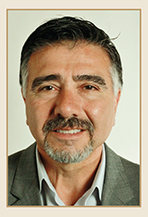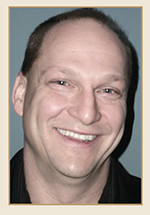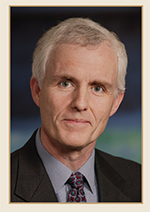Issue:May 2014
FIXED-DOSE COMBINATIONS - Fixed-Dose Combination Products - What’s in the Clinic? (Part 3 – Pipeline)
INTRODUCTION
In the first two parts of this series, we looked at the past and present situation with regard to fixed-dose combination (FDC) products. In this concluding article, we will take a peek at what’s in the pipeline. In the first two parts of this series (Drug Development & Delivery, March and April 2014), we defined what we meant by FDC products and provided an overview of the products that had been approved by the FDA throughout the past 2 decades. A review of these articles will provide a useful introduction to the analysis offered here. Unlike the first two articles that looked only at FDC products approved in the US between 1990 and 2013, this FDC pipeline review examines products worldwide. This analysis doubtlessly overestimates the number of products in development; many companies are more eager to announce product trials than their termination. Data was sourced using the PharmaCircle Product & Pipeline module, as of the end of March 2014.
THE PIPELINE
Collecting, collating, and editing the raw pipeline information provided by the PharmaCircle Product & Pipeline module suggests there are about 250 “announced” FDC products either in Phase I, Phase II, or Phase III development. This figure does not include simple generics of currently approved FDC products, and products targeted to OTC indications. This is a global figure.
THERAPEUTIC TARGETS
The Central Nervous System (including Neurology) was the top therapeutic target for FDC pipeline products, accounting for 22% of all products. This was followed closely by products targeting Infectious Disease (15%), Endocrinology (15%), and Cardiovascular Disease (14%). Second tier indications included Respiratory (8%), Oncology (5%), Dermatology (5%), and Ophthalmology (4%). This distribution differs from that seen with FDA-approved FDC products, which had a much lower proportion of approved Central Nervous System products (Table 1). At the same time, there is a lower proportion of Cardiovascular products in the pipeline. The increase in Endocrinology pipeline products is largely accounted for by a greater number of products targeted to the treatment of Diabetes. The paucity of approved Oncology products reflects the reality that when approved, most oncology products are not physically combined into a single dosage unit, or a fixed ratio, and don’t meet our strict criteria of a FDC product.
PHASE OF DEVELOPMENT
In some cases, individual FDC products are at more than one stage of development where they are being studied for different indications. In all cases, the most advanced stage of development was used as the basis for this analysis. Using this criteria, 36% of pipeline products had reached Phase III, 38% were in Phase II, and 26% had not advanced beyond Phase I. These numbers may be a little misleading. A cursory inspection of the products listed at each stage of development identified several that most likely were no longer in development but had not yet been so listed by the sponsoring company. Just a few years ago, it might have been safe to conclude there were additional Phase I and Phase II products in development that hadn’t been disclosed because of their early stage of development and a company’s desire for confidentiality. This would be particularly true for Big Pharma companies. This is much less likely to be the case now with requirements for companies to file clinical trials with American and European regulatory authorities, which are then subject to online listing and discovery.
MOLECULES IN DEVELOPMENT
A total of 340 different therapeutic actives were noted as being incorporated in the 250 or so FDC products in clinical development. The most commonly used actives were: amlodipine (10 products), carbidopa (8), and rosuvastatin (8). An expanded list is presented in Table 2.
DELIVERY ROUTES
It will come as no surprise that the majority of products are being developed for oral administration (55%). This was followed by injection (14%), topical/transdermal (11%), and inhalation (8%).
NEW CHEMICAL ENTITIES
The majority of FDC products in development, 81%, incorporated only previously approved actives. The remainder incorporated one, and more rarely two, non-approved actives. Among pipeline products incorporating approved actives, some of these actives are only approved in non-Western markets.
NOVELTY & CREATIVITY
There appear to be few products with the potential for the same therapeutic outcome changing impact we have seen with the antiviral combination products targeted to the treatment of Hepatitis C and HIV. Unsurprisingly, most products in development follow one of several well-validated strategies, a combination of complementary cardiovascular agents, estrogen and progestin combinations, and of course, antihistamines plus phenylephrine.
There are a couple of combination trends worth noting:
1. The combination of a vaccine with an antibody for the treatment of Cancer and Infectious Disease. There are also combinations in development incorporating two antibodies targeted to Cancer indications. These probably don’t qualify as FDC products; they most likely will not be administered as a single dosage form, and it’s to be expected that the dose of each component will be adjustable. Nonetheless, they represent exciting new combination product strategies that follow in the well validated path of a multi-drug approach to the treatment of Cancer.
2. Combinations of a statin with a separate class of cardiovascular product. This seems to be a variation on the commercially and therapeutically successful strategy of combining an antianginal with an antihypertensive to improve efficacy and compliance. With the increasing use of statins as a baseline therapy for cardiovascular disease, the combination of one or more antihypertensive or antianginal agents with a statin can offer a “one-pill” therapeutic regimen that should improve compliance and outcomes.
FINAL THOUGHTS
There are surprisingly few FDC products when one considers the number of approved pharmaceutical actives and the common practice of combining pharmaceuticals to achieve improved therapeutic outcomes. A couple of reasons for this come to mind. The first relates to the regulatory environment. In the US at least, there is limited regulatory exclusivity, typically 3 years, provided for a new FDC product. This is a sufficiently short period to deter companies from investigating new combinations in the absence of extended patent protection on one or more of the actives, or a patent on the particular combination.
The second reason is the competition provided by “best practice” use of the same agents as separate dosage units. Rather than prescribing an FDC of a beta-blocker and hydrochlorothiazide, a physician may prescribe the same betablocker and hydrochlorothiazide as separate dosage forms, in an identical dosage, to reduce the cost of the medication or avoid a formulary restriction. Often, the strategic decision to develop a new FDC product comes down to something as simple as dollars and cents at the patient level.
Fixed-dose combination pharmaceutical products have much to offer in the ongoing task of improving therapeutic outcomes. Future success will depend on the alignment of creative therapeutic insights and commercial incentives. In their absence, we will see more situations in which patients are faced with the reality of remembering to take more pills that are too easily forgotten. The result too often is missed doses and reduced efficacy.
The industry’s challenge going forward will be to find the right combination of clinical benefit and commercial return. That would be the sweet spot.
To view this issue and all back issues online, please visit www.drug-dev.com.

Dr. Tugrul T. Kararli earned his PhD in Pharmacology from the University of Florida and his MBA from DePaul University. Dr. Kararli worked at Searle/Pharmacia for 18 years and held various positions and responsibilities within the Pharmaceutical Sciences department, participating in pharmaceutics, product development, and drug delivery activities. As the Chairman of the Global Drug Delivery Technology Team at Pharmacia, he was responsible for identifying, planning, and executing the drug delivery technology strategies for marketed and development products. Dr. Kararli has authored numerous articles on various aspects of pharmaceutics and drug delivery and holds more than a dozen US and international patents. Currently, he is the Founder and President of PharmaCircle LLC, a knowledge management service company in the drug delivery and pharmaceutical/biotechnology fields.

Mr. Kurt Sedo is Vice President of Operations at PharmaCircle LLC. He earned his BS in Chemistry and Mathematics from the University of Wisconsin Stevens Point. Prior to joining PharmaCircle in 2003, he held various R&D Scientist positions within Searle/Pharmacia’s Pharmaceutical Sciences Department in Analytical Development and Drug Delivery.

Dr. Josef Bossart is Managing Director of The Pharmanumbers Group, a boutique research and consulting group providing the biopharmaceutical industry with analysis and insights that improve business outcomes. He has more than 3 decades of experience in the biopharmaceutical sector, including senior sales, marketing, business development, and management positions within Big Pharma, Specialty Pharma, and Emerging Pharma companies. He earned his PhD in Medicinal Chemistry from The Ohio State University, College of Pharmacy.
Total Page Views: 3805



















